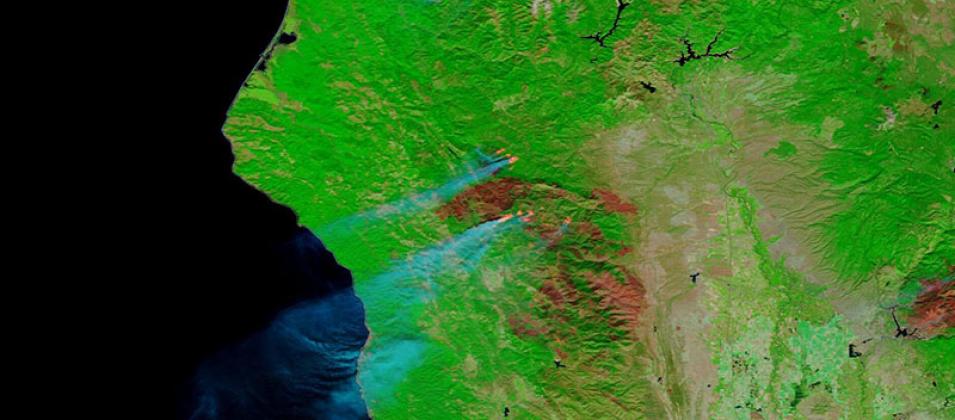August Complex Fire, California
Image of the August Complex Fire in northern California, acquired on 27 September 2020 by the Moderate Resolution Imaging Spectroradiometer (MODIS) instrument, aboard NASA's Terra satellite. This false-color image is comprised of MODIS bands 7-2-1. This band combination is useful for highlighting burned areas (shown here in deep red). Bright red areas in the north zone with smoke visibly emanating from them are actively burning areas.
The August Complex Fire is comprised of multiple fires that have burned together across six counties; Mendocino, Humboldt, Trinity, Tehama, Lake, and Glenn County. It has been active for 42 days and is currently 45% contained (Source: CALFIRE and InciWeb).
Burned areas or fire-affected areas are characterized by deposits of charcoal and ash, removal of vegetation and/or the alteration of vegetation structure. When bare soil becomes exposed, the brightness in Band 1 may increase, but that may be offset by the presence of black carbon residue; the near infrared (Band 2) will become darker, and Band 7 becomes more reflective. When assigned to red in the image, Band 7 will show burn scars as deep or bright red, depending on the type of vegetation burned, the amount of residue, or the completeness of the burn.
Visit Worldview to visualize near real-time imagery from NASA's EOSDIS, and check out more Worldview weekly images in our archive.
